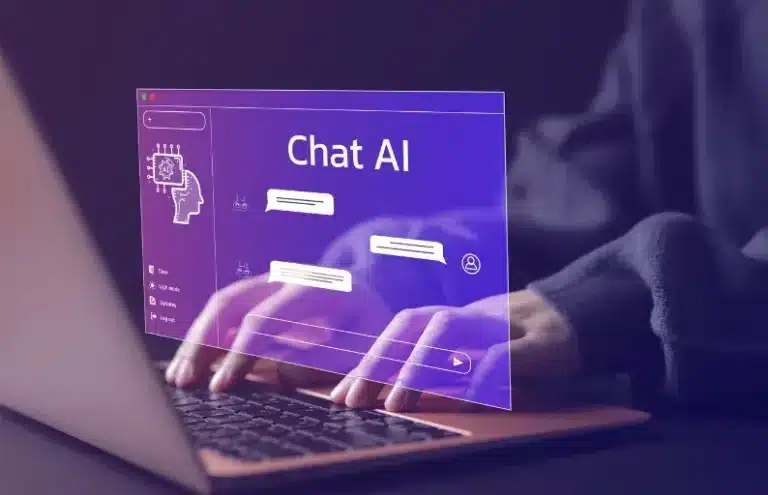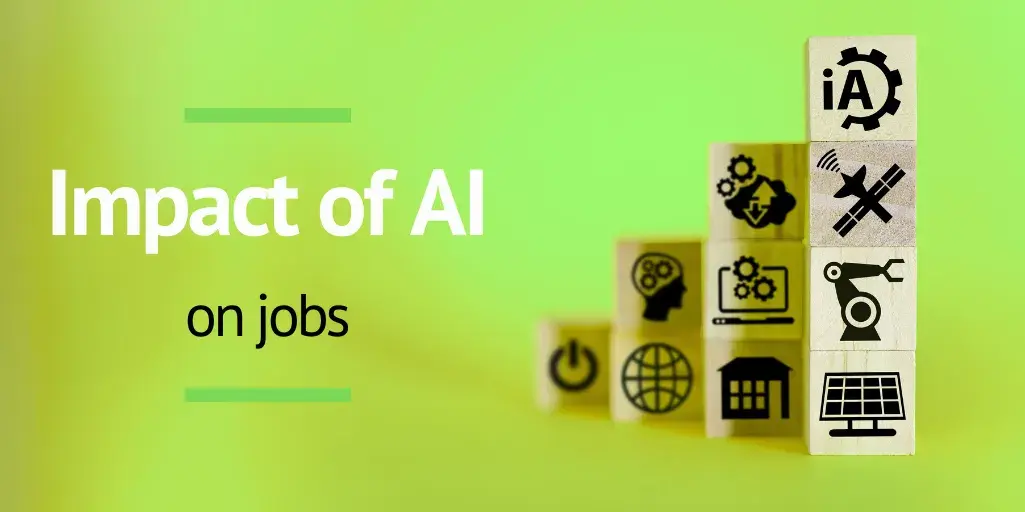Artificial intelligence is no longer a promise for the future — it’s an active driver of change, transforming the way we work, make decisions, and learn. In this new landscape, and beyond the initial fear that AI would replace people, a crucial question arises for any organisation that wants to remain competitive in a digital world: how does AI affect jobs? But perhaps an even more relevant question is: are people ready to work alongside this technology? How can we retrain human talent to face today’s and tomorrow’s challenges?
Rather than being seen as a threat, the impact of artificial intelligence on jobs should be understood as an urgent call to redesign training paths within organisations.
Repetitive and predictable tasks are giving way to activities that require critical thinking, analytical skills, and adaptability. In this context, ideas such as training in future skills, what is reskilling or upskilling, and reskilling with LMS take centre stage in any HR strategy.
That’s why LMS platforms for internal training are no longer just a channel for delivering content. They become strategic allies in enabling reskilling through elearning platforms, offering personalised learning paths, smart assessments, and reliable certification of new competencies.
The LMS, therefore, positions itself as the ideal environment to support workforce development through educational technology — in a scalable, sustainable way aligned with business goals.
Organisations that have already embraced elearning for reskilling are proving it’s possible to stay ahead of change rather than merely respond to it.
And you? Do you have the right tools to prepare your teams for what’s coming? Adapting to the digital era at work is no longer optional — it’s the only way to unlock the real value AI can bring to professional growth.
The rise of AI and the accelerated transformation of the job market

Something has irreversibly shifted in the balance between technology and employment. While in the past, technological innovations gradually impacted the workplace, artificial intelligence has disrupted that rhythm entirely.
Its ability to learn autonomously, generate content, and conduct predictive analysis has triggered an unprecedented shift, speeding up processes that once seemed unchangeable. This forces organisations to reassess both their production processes and the professional profiles they need to develop or attract.
This revolution raises multiple strategic questions.
Will more jobs disappear than will be created? Are we ready to respond to the automation of tasks and employment with new proposals that highlight human value? Which skills will become obsolete, and which will be most in demand?
Answering these questions requires more than observing trends — it demands agile training systems that can support this transformation in real time.
Understanding the current tensions between AI and human resources helps to clearly define a path of adapting to the digital era at work that goes beyond simply protecting jobs — it enables them to evolve.
Automation and the displacement of repetitive tasks
Algorithms don’t have working hours. They don’t need rest, nor do they freeze when faced with the unexpected. Thanks to AI, tasks like data classification, answering routine emails, drafting standard reports or managing basic inventories can now be automated more efficiently and at lower cost.
This phenomenon isn’t new, but it has accelerated with the emergence of increasingly accessible and versatile tools.
However, discussing the automation of tasks and employment doesn’t necessarily mean mass unemployment.
What we are witnessing is a reassignment of tasks: many activities that once required human intervention are now being handled by intelligent systems, freeing up time for higher-value work.
This shift is not happening evenly — operational and administrative roles are being affected the fastest. That’s why it’s crucial to launch reskilling plans that range from basic digital literacy to the development of new AI-related professional skills, helping teams adapt to new workflows.
Emergence of new roles and skills
While certain traditional roles are disappearing or evolving, AI is also generating a growing demand for new job profiles.
Organisations are looking for individuals who can integrate this technology into their daily tasks: ethical data analysts, prompt engineers, conversational experience designers, digital trainers, hybrid profiles that combine tech and human-centred approaches…
Interestingly, many of these new roles don’t require purely technical training.
Every department — from marketing to HR — is beginning to need people who understand how to make use of AI within their specific field. This means the challenge isn’t just to train engineers, but to equip all employees with the fundamentals and practical uses of this technology.
This is where professional training with artificial intelligence comes into play — not as a niche specialisation, but as a cross-cutting skill that can be integrated into any learning path.
The urgency of reskilling and continuous learning
The speed at which technology is reshaping the job market means that any skill now has a much shorter shelf life than it did in the past.
In this new context, the only guarantee of employability is the ability to keep learning. That’s why concepts like what is reskilling and how to prepare teams for AI are becoming top priorities for many talent and people departments.
Unlike one-off or reactive training, reskilling involves a structural reconfiguration of a person’s capabilities. It means learning from scratch what they don’t yet know — but soon will need to master to remain effective in their role.
This isn’t a passing trend, but a clear reality of the future of work. In fact, one of the leading workforce training trends for 2025 is the creation of internal programmes that support this transformation via LMS platforms, capable of delivering elearning for reskilling in a measurable and efficient way.
Rather than an expense, this kind of training is an investment in continuity. Because when the environment shifts every six months, knowledge must be updated just as frequently.
And to make that possible, we need scalable, personalised, and sustainable solutions — precisely what a well-implemented LMS platform can offer.
LMS platforms: the key ally for corporate reskilling

When it comes to professional reconversion, simply filling a virtual course library is not enough. Real transformation begins when each person receives the right content at the right time, with the right level of support and guidance to turn learning into practical competence. And that’s exactly what an LMS platform enables.
These tools have evolved far beyond being mere digital repositories. They have become dynamic environments capable of orchestrating adaptive learning experiences, tracking progress with precision, and ensuring that new skills are not only acquired but demonstrable.
In a world where jobs evolve at the pace of algorithms, having an intelligent training infrastructure is a clear competitive advantage. LMS platforms help translate talent strategies into concrete training actions, connecting business goals with team development.
This becomes even more crucial when deploying reskilling initiatives through elearning platforms, as not all employees start at the same level or share the same goals.
An LMS allows organisations to shape the experience to ensure it is effective, engaging, and aligned with real organisational needs.
How an LMS responds to new training needs
One of the greatest strengths of an LMS is its ability to create training paths that are not generic, but tailored to each role, level, and career path.
This personalisation of virtual learning not only improves learning outcomes but also enables companies to offer online courses for emerging professional profiles without fully outsourcing the process.
For instance, if a company wants to train its sales team to use AI tools that enhance client segmentation or proposal writing, it can design a learning path that includes everything from technical foundations to practical simulations. The LMS organises this content into progressive modules, adjusts the difficulty based on user progress, and provides assessments to validate each stage.
This transforms the elearning platform into an active component of the talent strategy — not operating in isolation, but integrated with other systems (HR, performance, onboarding) to ensure full traceability of employee development.
In this way, it becomes a key tool for any plan of professional training with artificial intelligence, capable of responding swiftly to constant changes in the environment.
AI within the LMS: intelligent features that support learning
Interestingly, as AI transforms course content, it also transforms the platform that delivers it. More and more LMS platforms are integrating intelligent systems that enable more automated management and a more personalised experience.
For example, instant feedback becomes a powerful learning driver when it’s generated automatically based on user activity. If an employee completes a simulation and makes repeated errors, the LMS can offer targeted recommendations to strengthen that specific skill.
The same applies to adaptive testing: rather than using standard exams for everyone, the system generates questions based on each learner’s responses, precisely identifying areas for improvement.
Additionally, recommendation systems help each user receive content suggestions tailored to their role, goals and pace. This logic — similar to how streaming platforms work — helps create far more effective workforce development experiences through educational technology, where every minute invested delivers real value.
These features are particularly useful in upskilling and reskilling programmes with LMS, where the aim isn’t just for learners to gain knowledge, but to apply it quickly in their roles.
By automating part of the tracking and feedback, tutors and managers can focus on more strategic and qualitative support.
Microlearning, gamification and mobile learning as a response to today’s pace
Lack of time is one of the biggest obstacles in any training strategy. That’s why elearning platforms have evolved towards more flexible and engaging formats that can be integrated into daily routines without overwhelming the user.
Microlearning, for instance, allows content to be broken down into short capsules focused on a single objective — ideal for introducing new concepts or reinforcing previous learning. This makes the material easier to absorb without requiring long sessions or excessive time commitments.
In corporate settings, corporate microlearning is particularly well suited to fast-paced work environments, as it enables continuous progress during short breaks, without interrupting core tasks. Its modular structure supports benefits such as improved knowledge retention, a boost in self-directed learning, and faster acquisition of job-relevant skills from day one.
Moreover, by focusing on specific needs, it helps optimise the time spent on training while maximising its real impact on day-to-day performance.
Another training approach gaining traction in recent years is gamification, a method that adds an extra layer of motivation to the learning process. Gamification involves using elements like challenges, levels, symbolic rewards, and leaderboards to stimulate engagement and consistency — key factors in ensuring high completion rates in elearning programmes.
Meanwhile, mobile learning makes it easier for employees to progress in a practical and convenient way from their mobile devices — whether commuting or in between meetings — without having to rely on a desktop.
In short, elearning platforms support a user-centric approach to training, offering companies a more effective way to address the digital transformation of employment. This enables organisations to embed learning into the natural flow of work — turning it into a continuous activity, rather than an exception or added burden.
How AI enhances the inner workings of the LMS

Artificial intelligence is often discussed as content to be taught — without considering that it can also act as the silent engine behind the system delivering it.
In the case of LMS platforms, AI is not just a subject to be covered but a technological ally that optimises processes, reduces administrative workload, and continuously improves the learning experience.
This integration becomes a living example of adapting to the digital era at work: the platform itself, by incorporating AI algorithms, adapts to each user’s behaviours, needs, and progress.
In other words, it learns to teach better.
This paradigm shift reinforces the logic of active, personalised, and effective learning — aligned with the workforce training trends for 2025 that prioritise efficiency and relevance over the number of training hours.
Real-time content personalisation
One of the main challenges in any reskilling initiative through elearning platforms is that each person starts from a different place. Some have prior knowledge; others adapt more easily; and some need closer support to move forward with confidence.
AI allows us to identify these differences not by guesswork, but through data.
By analysing user behaviour — time spent, frequent mistakes, topics visited, learning pace — the LMS can dynamically adjust the content it provides.
This way, someone who already masters part of the syllabus can move ahead faster, while those needing reinforcement receive additional resources — all without requiring constant human intervention.
This enables more accurate and effective training in future skills, with learning paths tailored to each employee, ensuring that the time invested delivers a measurable return. Moreover, this personalisation improves the learning experience: frustration due to irrelevant content is reduced, and the sense of individual progress is strengthened.
Automating tracking and reporting
Another benefit of AI in elearning programmes is the automation of routine tracking tasks, such as report generation, detecting learner drop-offs, or identifying inactive users.
Thanks to its algorithms, the system can analyse large volumes of data and provide intelligent alerts to tutors or training managers.
For instance, if a group of employees is falling behind in a module on new AI-related professional skills, the system can detect it and send proactive suggestions to the trainer — to adjust the approach, offer additional resources, or reach out directly to participants.
This early-intervention logic improves programme effectiveness and prevents issues from snowballing into larger problems.
Additionally, automatically generated reports allow companies to clearly visualise the real state of workforce development through educational technology. Rather than simply tracking who has completed a course, it’s possible to analyse usage trends, learning bottlenecks, and correlations between training and performance — providing a solid foundation for decision-making.
More efficient evaluation and certification
Assessment has traditionally been one of the bottlenecks in professional training with artificial intelligence. Marking exams, reviewing exercises or validating competencies takes time — especially when scaled to hundreds of employees. This is where AI can make a real difference.
Automated assessment systems go far beyond correcting multiple-choice tests.
Today, an AI-powered LMS can analyse open-ended responses, identify patterns in reasoning, detect conceptual mistakes, and provide detailed feedback in seconds. This makes it possible to teach through assessment — turning the test itself into a learning experience.
In addition, AI facilitates the issuance of digital certificates, with automatic validation of acquired skills and full traceability. This kind of certification not only brings value to the employee, who sees their efforts recognised, but also allows the company to demonstrate — with data — the impact of its upskilling and reskilling programmes with LMS.
When it comes to teaching AI, few things are as coherent as using a platform that also relies on AI to function better. This technological synergy turns the LMS into a living tool — one that learns from every use and improves with every piece of data.
And that, precisely, is the direction in which the future of corporate learning is heading.
Strategic benefits for the company

Investing in professional training with artificial intelligence is not just a technological upgrade — it’s a strategic decision that directly impacts competitiveness, efficiency, and the organisation’s ability to adapt.
In today’s fast-changing environment, where change cycles are shortening and market demands shift without warning, companies that can learn faster than their competitors gain a substantial advantage.
That’s why implementing an adaptive LMS with intelligent features should not be seen merely as an improvement to the training department. It’s a lever for transformation across the entire organisation. But how does this translate into concrete business benefits?
Effectively closing skills gaps
Most organisations today are facing a mismatch between the skills their teams currently have and the ones they actually need to meet today’s challenges. This gap cannot be closed with generic training — it requires the creation of personalised training pathways tailored to specific roles, with relevant content and rigorous assessment systems.
A well-implemented LMS makes it possible to identify those gaps and design learning paths that address them precisely.
This approach, essential in reskilling processes through elearning platforms, ensures that teams are acquiring skills that are directly aligned with the company’s strategic goals.
In this way, the training effort doesn’t remain theoretical but has a direct impact on performance improvement.
Greater engagement and a culture of learning
One of the most common challenges in corporate training initiatives is lack of engagement from employees — often demotivated, they end up abandoning the course.
Long, generic or irrelevant courses tend to lead to dropout, disengagement, or shallow learning. The good news is that this is not inevitable: when content is well designed and the format is engaging, commitment increases significantly.
Modern elearning platforms offer experiences that are much closer to what users expect from their favourite digital platforms: interactive, visual, short-form content with instant feedback and clear progress tracking.
In this environment, learning shifts from being an obligation to becoming a genuine tool for development. AI helps boost learning motivation by offering personalised content, tailored to each user’s interests, pace and needs.
Fostering this culture of continuous improvement has a multiplying effect. When learning is embedded into the daily routine and seen as something useful and accessible, it not only enhances individual training but also strengthens the collective identity of a company that evolves alongside its people.
Measuring return on investment
One of the key advantages of investing in intelligent LMS platforms is their ability to accurately measure the impact of training. Beyond basic stats like course completion rates, these tools can analyse individual progress, the acquisition of specific skills and — most importantly — their correlation with key business indicators.
For instance, if a company launches a workforce development programme through educational technology for its sales team focused on AI tools, it can later evaluate whether that training has translated into better results: higher conversion rates, improved segmentation, reduced time-to-close.
This type of analysis helps justify the investment, fine-tune the content, and scale the actions that have proven most effective.
In a world where efficiency is expected and talent is highly competitive, having training that delivers measurable results is a long-term asset. And when that training aligns with major workforce training trends, the return is visible not only in reports but in the company’s real capacity to keep growing.
Case study: a company transforming its teams with AI and LMS
To better understand how professional training with artificial intelligence can be applied in a real organisation, let’s look at the example of a fictional company: Nexora.
Nexora is a growing tech consultancy that identifies a strategic need: to train its marketing, sales and customer service teams in the use of artificial intelligence tools. Until now, they’ve relied heavily on external providers to automate campaigns, analyse data or use generative AI — a dependency that limits their autonomy and slows down decision-making.
To reverse this situation, Nexora designs a reskilling initiative using elearning platforms focused on new AI-related professional skills. They use their corporate LMS to launch personalised learning paths for each profile, including microlearning content, practical activities and automated assessments. The platform adjusts difficulty levels, generates progress reports and provides instant feedback.
The training team monitors the process with the help of smart alerts. This allows them to act quickly if a user gets stuck or needs support. At the same time, the AI built into the LMS recommends complementary content based on learners’ progress and demonstrated skills.
The results are visible within weeks: employees begin applying new tools in their daily work, autonomy increases, and external service costs go down. Management also values the fact that the entire process is traceable, measurable and aligned with the company’s strategic goals.
In this way, Nexora turns its LMS platform into the central pillar of its digital transformation and a real tool for developing future-ready skills.
The future starts today: towards continuous and strategic learning
talent.
In this context, elearning platforms are not a complement; they are the operational foundation on which a culture of constant upskilling can be built.
Their ability to deliver online courses for emerging professional profiles, adapt to individual learning rhythms, integrate artificial intelligence, and measure results in real time makes them essential infrastructure for preparing teams in an agile, strategic way. They are not just ready to support change — they are built to anticipate it.
Many companies still ask how to prepare their teams for AI or whether it’s the right time to launch a reskilling plan. The answer is simple: the time is now. Delaying training transformation means giving up ground in a landscape that evolves every day.
Investing in elearning for reskilling is not about shielding against change — it’s about leading it from within, creating autonomy, motivation, and new capabilities.
In the face of fear of replacement, one certainty remains: those who learn, evolve. And those who evolve, lead.
Choosing professional training with artificial intelligence is a statement of intent. Because when an organisation commits to supporting its people in acquiring key skills, it is also committing to its own capacity for transformation.
The future doesn’t wait — it is designed. And the best time to begin is today.
Frequently asked questions

Can an LMS support the development of new in-demand skills for 2025?
How can you automatically assess whether an employee has mastered AI?
How can AI training be integrated with face-to-face sessions?
What benefits does elearning offer for corporate reskilling?
What is reskilling and why is it crucial in the age of artificial intelligence?
What impact does task automation have on employment?
How does AI affect employment in non-technical areas?
What should a good AI training programme include?
What are the key workforce training trends for 2025?
What advantages does an LMS offer compared to other training methods?
An LMS enables the management of professional training with artificial intelligence in a centralised, flexible and measurable way. It supports continuous learning, adapts content to each profile, and generates reports to assess training impact.
